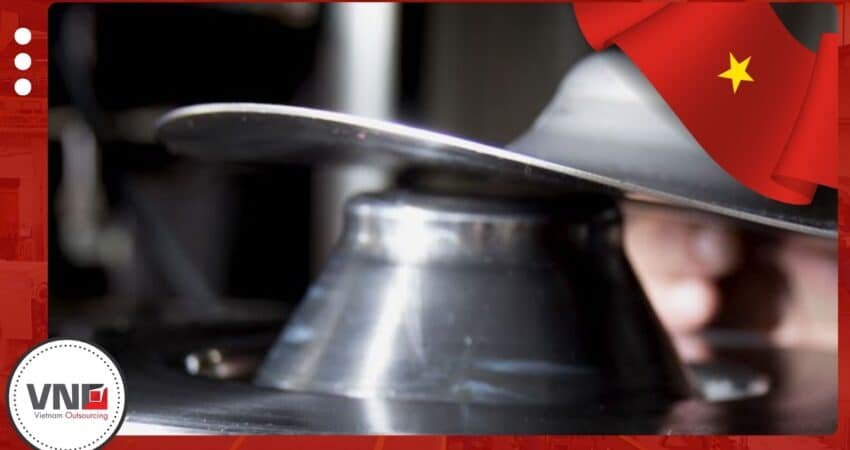- March 3, 2025
- Daniel Pham
Hydroforming Steel in Vietnam: A Growing Global Hub
Table of Contents
Introduction: The Rise of Hydroforming Steel in Vietnam
Hydroforming steel has become a preferred method for producing automotive, aerospace, and industrial components due to its ability to create lightweight, strong, and complex shapes with minimal waste. With rising costs in traditional markets, manufacturers are increasingly seeking cost-effective alternatives. Vietnam is emerging as a key player in metal forming, specially fluid forming steel, offering lower production costs, skilled labor, and strong trade agreements that make it a compelling option for international buyers.
Key Benefits of Hydroforming Steel
- Enhanced Strength-to-Weight Ratio: Hydroformed steel parts are lighter yet stronger, reducing overall material use.
- Improved Structural Integrity: The uniform application of fluid pressure creates seamless, high-strength components.
- Greater Design Flexibility: Hydroforming allows for complex geometries that are difficult to achieve using traditional stamping methods.
- Material Efficiency: Less material waste lowers costs, making fluid forming steel ideal for high-volume production.
Why Vietnam Is a Competitive Hub for Steel Hydroforming
1. Lower Production Costs
Vietnamese manufacturers benefit from low labor costs while maintaining high levels of technical expertise. This cost advantage makes fluid forming steel in Vietnam more affordable for global companies compared to China, India, or Western countries.
2. Advanced Hydroforming Technology
Vietnam’s factories are equipped with state-of-the-art fluid-based shaping presses, CNC machining, and automated systems. These advancements ensure precise steel forming, meeting strict global quality standards for industries such as automotive and aerospace.
3. Strategic Location for Global Exports
Vietnam’s location in Southeast Asia allows easy access to major markets, including North America, Europe, and Asia. This proximity to China also enables seamless integration into the global supply chain, reducing shipping times and costs.
You might also want to know about stainless steel press brake
Ensuring High Standards in Hydroforming Steel Production
Compliance With International Certifications
Vietnamese pressure-formed steel factories comply with ISO 9001, ASTM, AS9100, and IATF 16949 certifications, ensuring consistent quality for automotive, aerospace, and industrial applications.
Skilled Workforce and Technical Expertise
With ongoing investment in workforce training programs, Vietnamese manufacturers have developed a highly skilled labor pool specializing in precision fluid-based shaping techniques.
Rigorous Quality Control and Testing
Factories implement comprehensive quality control with in-house material testing labs using spectrometers, tensile testers, and CMM tools to verify steel grade and structural integrity.
Vietnam’s Trade Advantages for Hydroforming Steel
1. Free Trade Agreements (FTAs) Lower Costs
Vietnam participates in multiple free trade agreements (FTAs) that benefit companies sourcing hydraulically shaped steel components:
- EU-Vietnam Free Trade Agreement (EVFTA): Reduces tariffs on steel exports to the EU.
- Comprehensive and Progressive Agreement for Trans-Pacific Partnership (CPTPP): Expands trade access to markets like Canada, Japan, and Australia.
- Regional Comprehensive Economic Partnership (RCEP): Strengthens Vietnam’s trade partnerships across Asia-Pacific markets.
- US-Vietnam Trade Relations: While no formal FTA exists, Vietnam benefits from preferential trade terms, making fluid forming steel more cost-effective than sourcing from China.
2. Government Support for Manufacturing
Vietnam’s pro-business policies, tax incentives, and infrastructure investments have fueled rapid growth in the pressure-formed steel sector. This government backing ensures that manufacturers remain competitive in global markets.
Overcoming Challenges in Sourcing Hydroformed Steel From Vietnam
Logistics and Shipping Considerations
While Vietnam offers competitive pricing, international buyers should factor in shipping times. Sea freight to the US or EU takes approximately three to six weeks, while airfreight is faster but incurs higher costs.
Ensuring Supplier Quality and Reliability
Not all manufacturers meet the same quality standards. To mitigate risks, companies should conduct factory audits, certification checks, and product testing before finalizing contracts for fluid forming steel components.
Navigating Trade Compliance and Import Regulations
Different countries have varying import/export regulations for steel products. Partnering with an experienced sourcing company like Vietnam Outsourcing Pte Ltd can help businesses streamline regulatory requirements and avoid unexpected costs.
FAQs: Hydroforming Steel in Vietnam
- How does fluid forming steel compare to traditional stamping? Hydroforming allows for lighter, stronger, and more intricate designs while reducing material waste.
- Can Vietnamese manufacturers produce large volumes of hydraulically shaped steel parts? Yes. Many Vietnamese factories have automated fluid-based shaping systems capable of high-volume production.
- Are Vietnamese fluid-based shaping facilities certified to international standards? Most reputable manufacturers hold ISO 9001, ASTM, AS9100, or IATF 16949 certifications, ensuring consistent quality.
- How long does shipping take from Vietnam to the US or EU? Standard sea freight takes three to six weeks, while airfreight is faster but at a higher cost.
- How can businesses ensure compliance when sourcing hydraulically shaped steel? Working with a trusted sourcing partner like Vietnam Outsourcing Pte Ltd simplifies compliance and logistics, ensuring a smooth procurement process.
Conclusion: Why Global Buyers Are Turning to Vietnam for Hydroforming Steel
Vietnam’s cost-effective production, advanced manufacturing technology, and strong trade agreements position it as a leading alternative for fluid forming steel. As global manufacturers seek lower costs and supply chain diversification, Vietnam is rapidly gaining recognition as a high-quality, reliable supplier.


